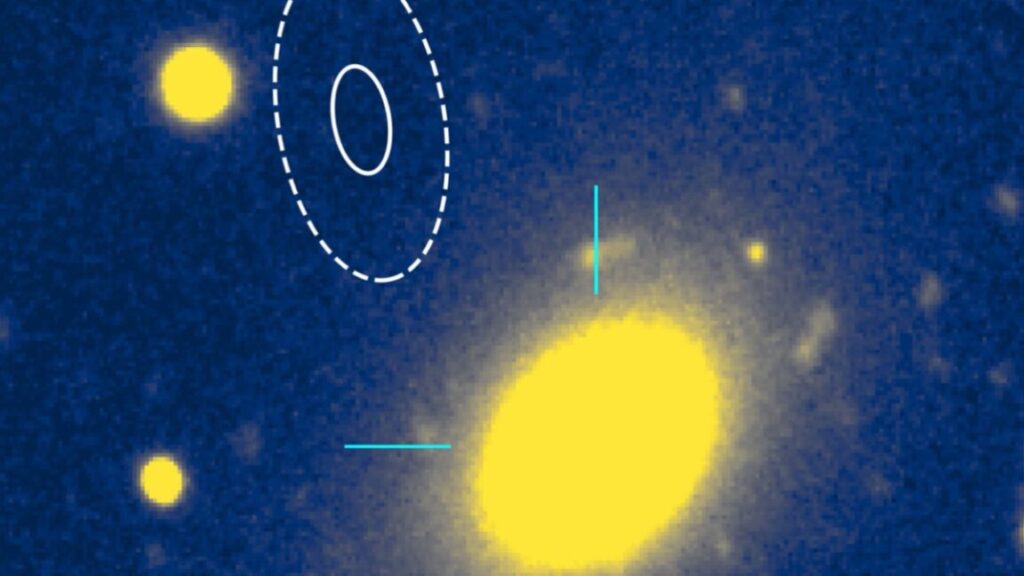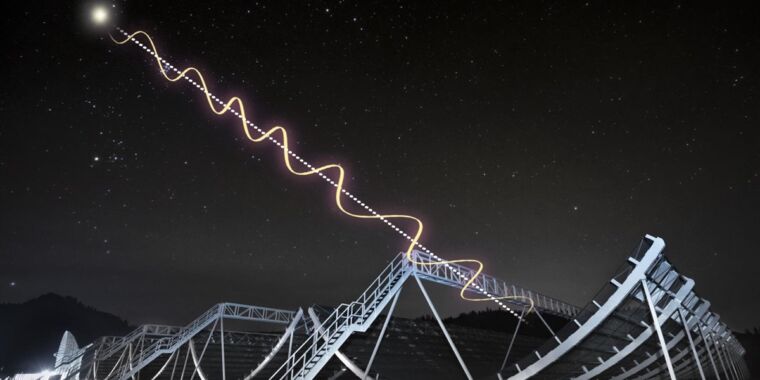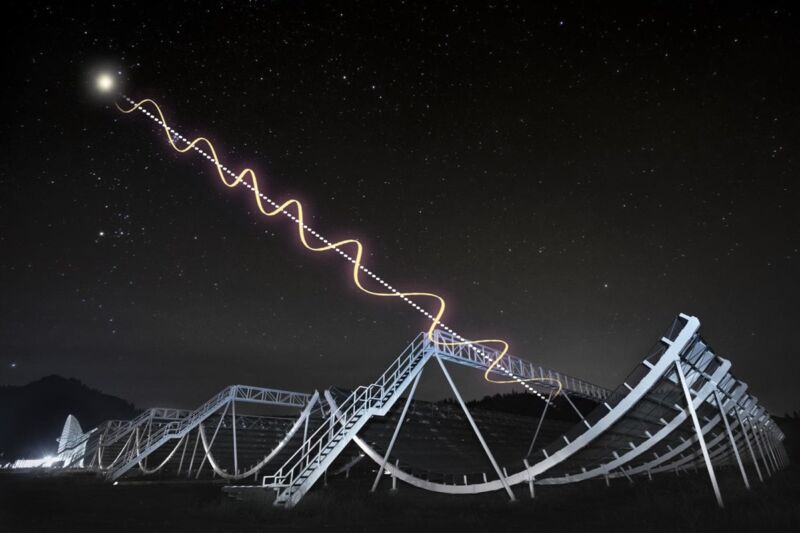Fast radio burst in long-dead galaxy puzzles astronomers
A surprising source
FRBs are of particular interest because they can be used as probes to study the large-scale structure of the universe. That’s why Calvin Leung, a postdoc at the University of California, Berkeley, was so excited to crunch data from Canada’s CHIME instrument (Canadian Hydrogen Intensity Mapping Experiment). CHIME was built for other observations but is sensitive to many of the wavelengths that make up an FRB. Unlike most radio telescopes, which focus on small points in the sky, CHIME scans a huge area, allowing it to pick out FRBs even though they almost never happen in the same place twice.
Leung was able to combine data from several different telescopes to narrow down the likely position of a repeating FRB, first detected in February 2024, located in the constellation Ursa Minor. When he and his CHIME collaborators further refined the accuracy of the location by averaging many bursts from the FRB, they discovered that this FRB originated on the outskirts of a long-dead distant galaxy. That throws a wrench into the magnetar hypothesis because why would a dead galaxy in which no new stars are forming host a magnetar?
It’s the first time an FRB has been found in such a location, and it’s also the furthest away from its galaxy. CHIME currently has two online outrigger radio arrays in place—companion telescopes to the original CHIME radio array in British Columbia. A third array comes online this week in Northern California, and according to Leung, it should enable astronomers to pinpoint FRB sources much more accurately—including this one. Data has already been incorporated from an outrigger in West Virginia, confirming the published position with a 20-times improvement in precision.
“This result challenges existing theories that tie FRB origins to phenomena in star-forming galaxies,” said co-author Vishwangi Shah, a graduate student at McGill University. “The source could be in a globular cluster, a dense region of old, dead stars outside the galaxy. If confirmed, it would make FRB 20240209A only the second FRB linked to a globular cluster.”
V. Shah et al., Astrophysical Journal Letters, 2025. DOI: 10.3847/2041-8213/ad9ddc (About DOIs).
T. Eftekhari et al., Astrophysical Journal Letters, 2025. DOI: 10.3847/2041-8213/ad9de2 (About DOIs).
Fast radio burst in long-dead galaxy puzzles astronomers Read More »


